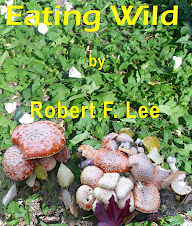Well, winter is rushing toward us. In northern latitudes, that generally means
one to three feet of snow covering the ground, and almost every edible plant in
the wild. Desperate grazing wildlife
like deer or bison, or even smaller rodents and birds are compelled to learn to
dig through the frozen white for food.
It is a hard season for most animals.
That, unfortunately, includes humans that like to “eat wild.”
I have written about several sources of food in the wild
during the winter, but there is one that I have not touched on, for any season:
moss.
Most of us believe that moss and lichens are not edible. However, lichens make up a substantial part
of the diet in the Arctic, and almost every moss and lichen is edible. That does not imply that they are palatable,
or nutritious, but most can, indeed, be eaten.
In fact, many ascribe medicinal properties to mosses, with the most
prevalent claim being that they are antiseptic and some are analgesic. Few studies have either confirmed or denied
these claims. In my experience, though,
I have yet to find a “tasty” moss. They
are bitter, acidic tasting or, at best, bland.
But, as plants, they do have some vitamins, often contain minerals
leeched from the soils or decay on which they grow, and are a source of small amounts of chlorophyll.
Taste be damned. When desperate, eat!
There a couple of cautions, however. Moss, due to its tight “leafy” nature, trap
lots of insects, dirt and other undesirable debris. If you like a bit of adventure with your
meal, forego vigourous washing., and chew away!
Moss, as well, often grows, layer upon layer, on years or centuries of decaying
moss and other plant material. Along
with unhealthy doses of rot, you are inviting bacteria and other pathogens into
your palate.
In short, moss can be eaten, in an emergency, and can be
found on tree trunks, rocks, and other exposed areas in the worst days of
winter, so, as a survival food, they are welcome. In any other circumstance, pass moss and
lichens by.

